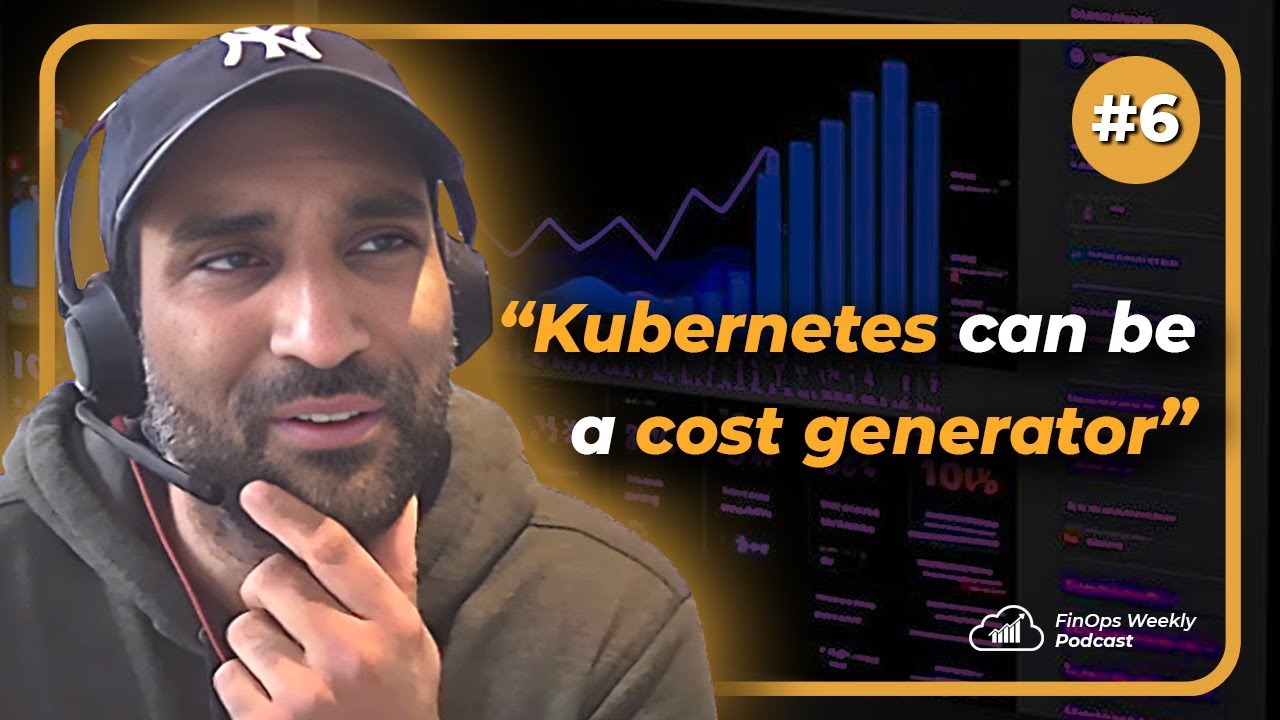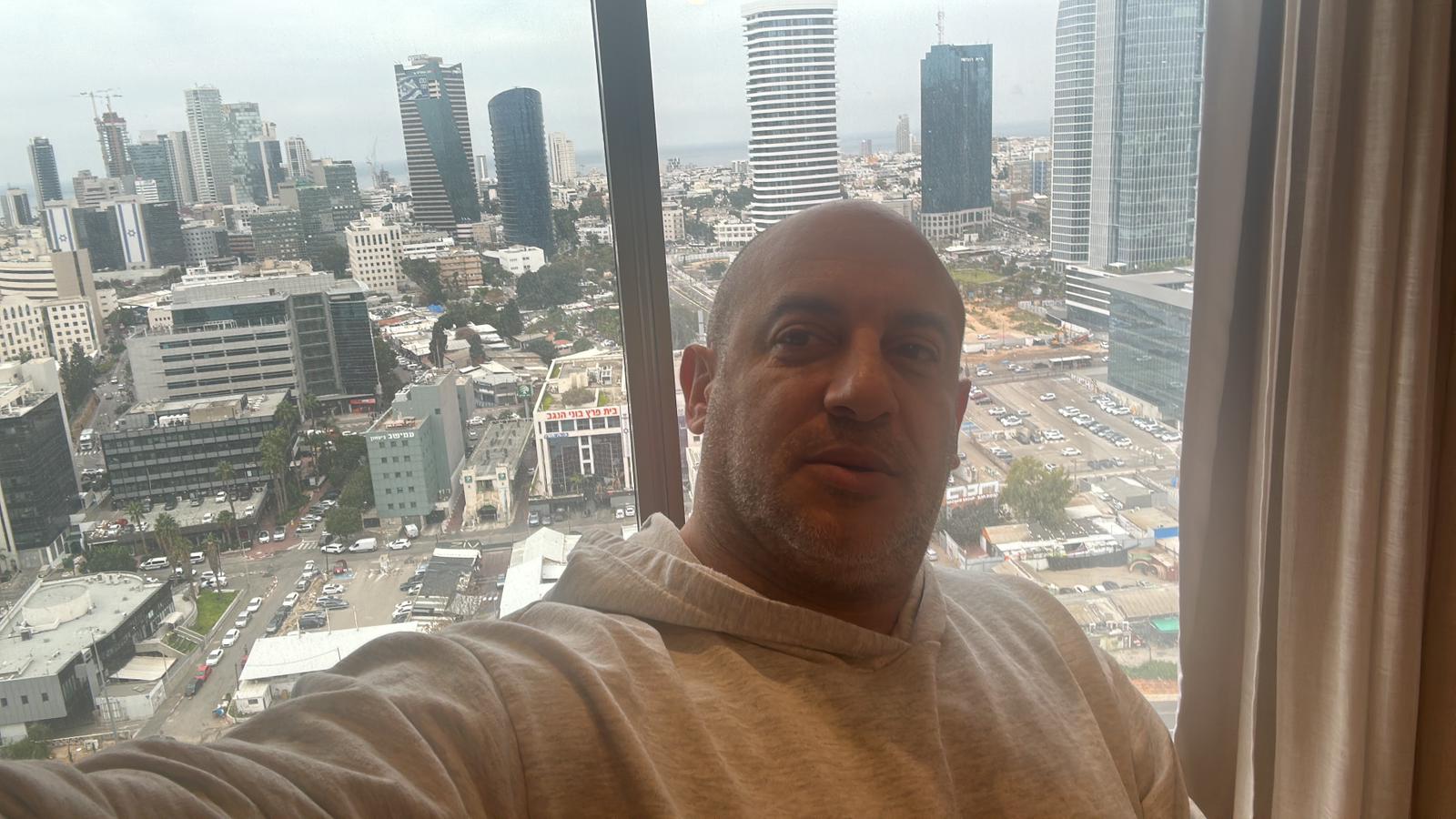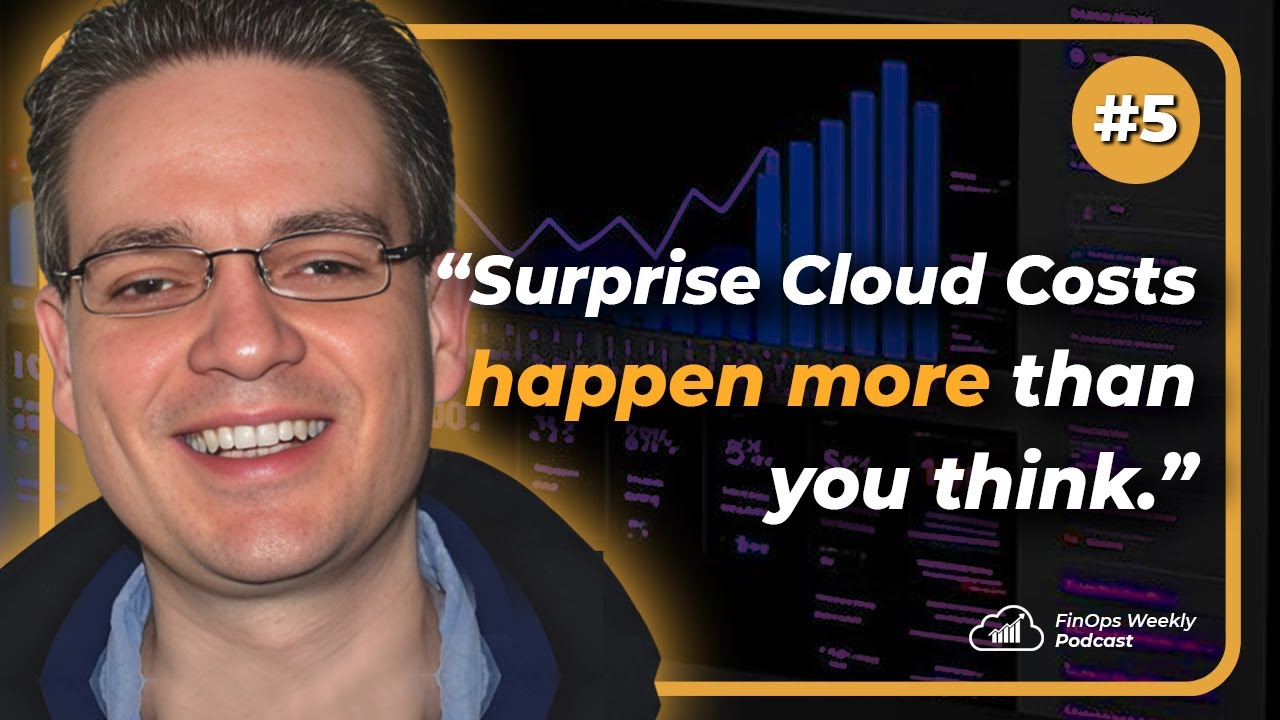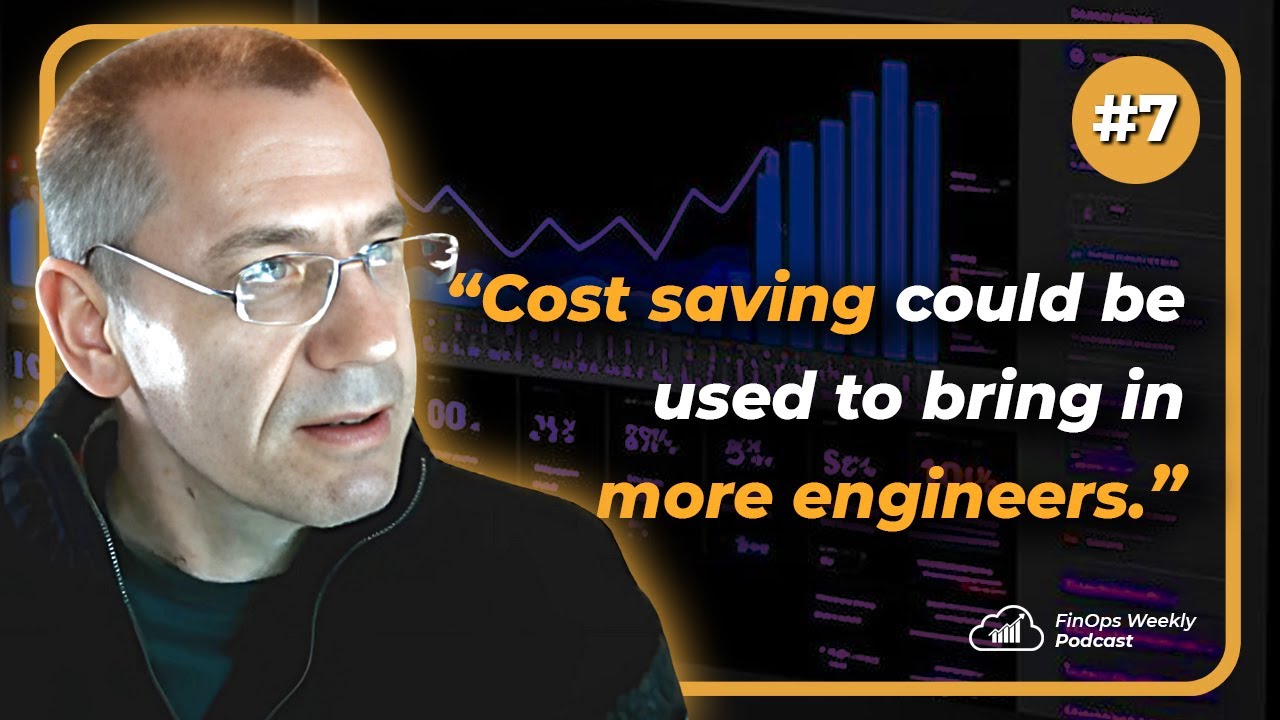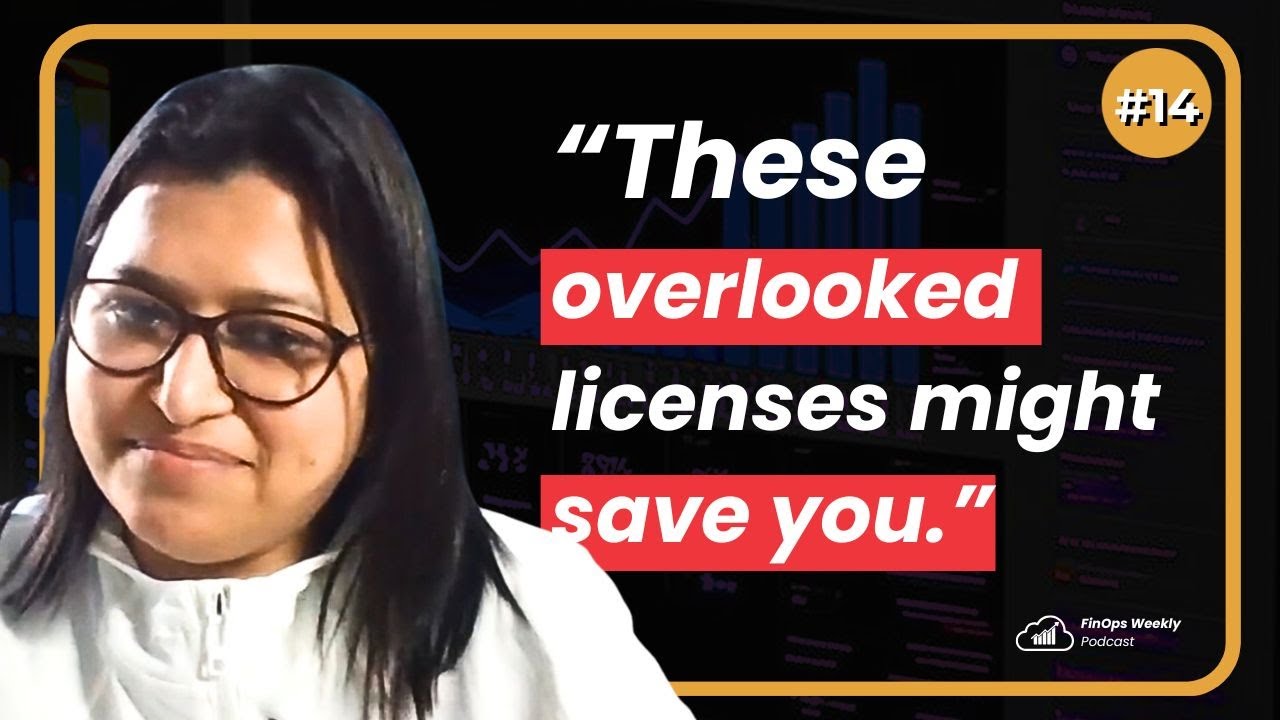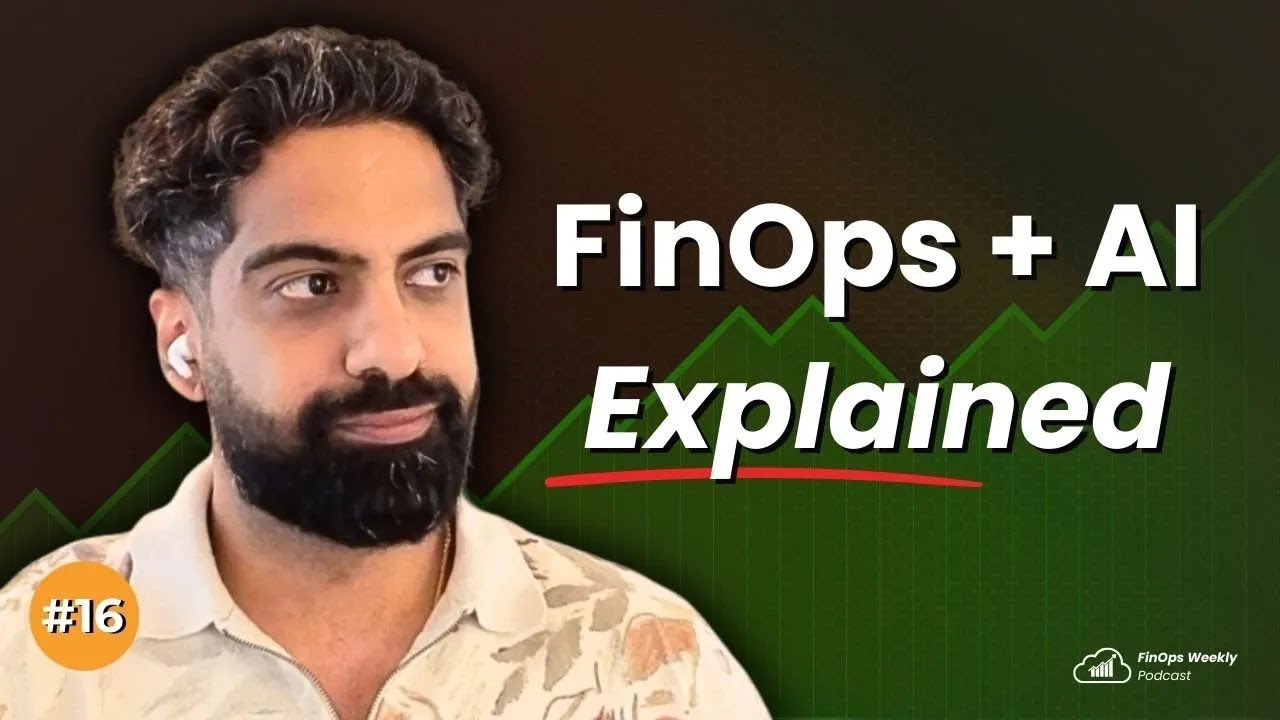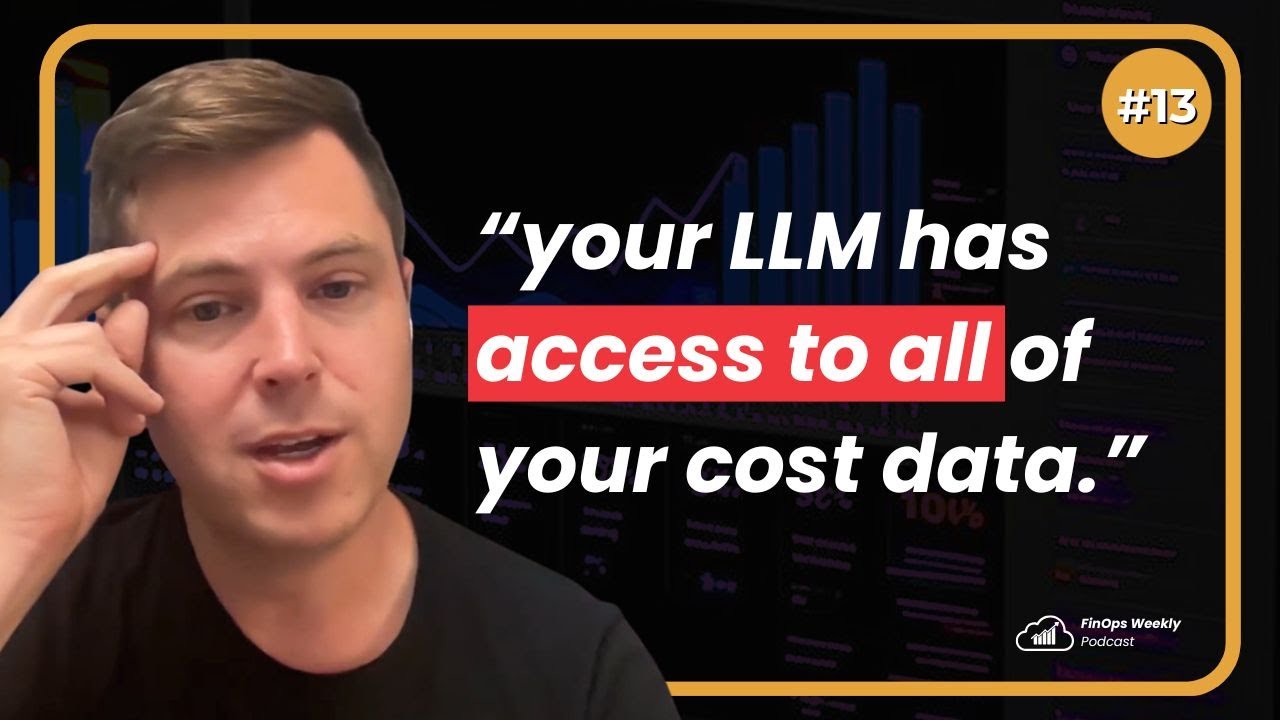Episode Transcript
[00:00:00] Speaker A: This community is trying to make things more efficient, make it go faster, make it cost less, you know, make it less work for me. That's what I like about the whole open source community. We do believe that you should be using the right technology for your particular business, which is why there's like over 200 AWS services.
[00:00:22] Speaker B: Agreed. I mean, to be anything within the FinOps and the DevOps and the FinOps communities, that's one of the shared feelings that we get that it's super active, super evolving and super willing to share.
[00:00:34] Speaker A: I have a real passion for cost optimization, so I developed a cloud intelligence dashboard that I think we're going to be talking about in a moment, which would help our customers view their Azure costs using.
[00:00:51] Speaker B: Welcome everyone to a new episode of our FinOps weekly podcast. Today, Damian brought us a very interesting guest.
So some of you may know him from LinkedIn updates and from releases that has been here and there on the dashboard from aws. So Damian, tell us who has you bring to today?
[00:01:17] Speaker C: Well, you know that I'm used freak world, but I'm a freak of visualizations and Cost Intelligent dashboard.
[00:01:26] Speaker B: Yes.
[00:01:29] Speaker C: I work very closely with Mo on visualization of Azure data and we brought it into Cost Intelligent Dashboard along with other visualizations that I have. So I thought it was very cool what we did and Mo is one of the experts, so I thought it would be a good contribution to our, you know, viewers. So here we are. Thank you for coming home.
[00:01:57] Speaker A: Oh, well, I'm. I'm very pleased to be here. Yep.
Yeah, My name's Mo and as Damian said, I've been recently working with him.
I am a solutions architect here at aws. I'm a specialist solutions architect for application modernization and I cover customers within the United Kingdom, specifically in public sector.
But like some of my other solution architect colleagues, we sometimes get involved in more global opportunities and I have a real passion for cost optimization.
So I developed a cloud intelligence dashboard that I think we're going to be talking about in a moment, which would help our customers view their Azure costs using Amazon Quicksight.
[00:02:45] Speaker C: Great, great. So let's jump into it.
[00:02:49] Speaker A: Let's go.
Yeah.
[00:02:51] Speaker C: Tell us a little bit how we all started and what we did.
[00:02:58] Speaker A: Yeah, yeah, sure, yeah. So I mean, this started a long time ago actually. Is it a long time ago? September 2023 is when we first released the first iteration and it came about because a lot of people are using the cloud intelligence dashboards. We've obviously got a wealth of cost data that we surface through the AWS Console, but people like the ability to create their own visuals. They have very specific metrics that they're looking for and as their FinOps processors and the department matures, they want to refine those metrics, surface those insights so that they can be truly cost optimized. So Cloud Intelligence Dashboards is an absolute amazing initiative done by some of my fellow Amazonians and I had a customer here in the UK who was very keen on using them, but his question was, hey, I absolutely love these, but can I somehow get my Azure costs into these? We were like, yeah, but we're aws, but it was a valid question and we started asking other customers about this. A lot of customers have multi cloud environments, so they are interested in using the same functionality, keeping that same business intelligence tool set, quicksight, and being able to view cloud costs across multiple vendors. So that's pretty much how it started.
We came out with the first iteration of the Cloud Intelligence dashboard back in September 2023 to address that particular customer's demands. And it kind of snowballed. There was a lot of customers that were very interested in it, a lot of deployments since then and yeah, it's been a bit of a success.
[00:05:01] Speaker C: Noble is a very good term because I think, I don't know, there's a million decimals today.
[00:05:09] Speaker A: Oh, wow. Yeah, yeah.
[00:05:12] Speaker C: I think you are releasing almost every every week or every two weeks a new dashboard. It's amazing.
[00:05:18] Speaker A: It is, yeah. The pace of innovation here is absolutely crazy. But that's to keep up with the services, I guess as well.
But yeah, I guess for us the main focus was on trying to just empower customers that have those multi cloud environments to be able to look at both of their costs in a single tool, which was quicksight.
Yeah. So that was it. And then I guess moving on from there, the next ask from customers was, okay, that's great that I can view my Azure costs in quicksight in one dashboard now and I can view my AWS costs in another dashboard, but it'll be really good if I could just layer those on top of each other.
So that was kind of where we went to next. And I think, you know, me and Damian worked together on this one in terms of building that single pane of glass. And it was all precipitated by, of course, the FinOps foundation and the release of the Focus specification.
[00:06:27] Speaker B: Yeah, I'm going to be that has been key to being able to enable that. And you know, tell us, maybe Damian can work on that. Like, how did you work on this? How you been able to collaborate on this stuff? I think it's super interesting to see the customer like customer provider collaboration. How did that work?
[00:06:51] Speaker A: Well, I have to admit that I didn't have much input into sort of aligning our cost model to the FinOps Foundation Focus model. That was some of my, my esteemed colleagues.
But the problem that I had, particularly with these requests from customers about viewing single pane of glass for Azure and aws, was that there was no uniform cost model. So I actually started developing some mappings between Azure and AWS to try and get there and then thankfully the Focus cost model was released and it kind of tied everything together, it gave us that common data model.
So from there it was relatively easy for me to amalgamate those two costs because Microsoft went live with their Focus cost export, AWS went live with theirs and it gave us that common data model so that I could plumb everything in and get that single pane of glass people were waiting for.
[00:07:57] Speaker B: That's interesting. And Damien, on your side, how things went and how did it work for the customer view?
[00:08:05] Speaker C: Well, to be honest, it was.
[00:08:11] Speaker B: The.
[00:08:11] Speaker C: Installation and the flow is very, very easy to do.
And we started from basically installing the, the Azure cost intelligent dashboard.
It went pretty smooth.
But then we tried to, you know, complex things, try to unify before the Focus, try to unify that into one dashboard and we were kind of like very.
The requirements from the bank of Israel were very, very, very high and very complex. So in some point I was trying to rebuild and recreate and do different build flows and that and I had, and I required a little bit help from aws. So I contacted Tom, which is Norm, and he of course pointed me to Mo, which is the, the one who initiated and built this. And then we started to work together and it was very, very, very, very fun. And today we had one of the complex environments in the bank that is still being used by them to today.
[00:09:34] Speaker B: That's awesome.
Go ahead more.
[00:09:38] Speaker A: And yeah, I mean this is what we live for is these challenges that the customers bring us. So Damien had a very specific challenge from customer about backfilling data, etc. But yeah, I'm glad that we managed to get it all to work and you know, hopefully it's still working. Damien, any, any issues there?
It's still good.
I haven't heard from you for a while so I assumed it was okay.
[00:10:06] Speaker C: Everything is great and actually it's amazing what we did there.
We will see soon. Maybe you hear from me when we move fully focused but. And when the new Focus versions like what we hear the last time that we were in Phenox X, we hear that going to be releasing a new Focus, two Focus versions per year, something like that. So you may hear from us. I don't know.
[00:10:40] Speaker A: Yeah, that's interesting. Yeah, yeah. I mean I could. Should I share my screen and show you perhaps some of the architecture behind it?
Let me, let me do that now. So this was the, the blog post I was that we actually, let me go back to this one. So this is what we released in September 2023, kind of a.
A standalone dashboard review yours, your cost.
And then later in November 2024 we released the multi cloud cost visibility. So this is one that's built on the Focus cost model.
And it's interesting what you said there Damien, about the Focus cost model changing over time because we've already had that with Microsoft. They've released a new version of their export, slightly changing some of the fields.
This is kind of the first protocol if you are interested in trying this thing out. There's a blog post over here and there's a GitHub repository with everything in it and then also a workshop to try and help you self service to install this solution yourself.
There's also some demo dashboards here that you can click on.
But I just wanted to quickly, just going back to Damien's point, talk about the architecture that we built for this, which is lots of kind of, you know, AWS services. I'm not going to go into too much detail about it, but what we did do though was we envisaged that we would be making some changes to the cost model as life progresses.
So all the changes are made within a glue script. That's where any changes are made. So we don't have to affect any of this other stuff around here, the lambda functions and Amazon S3 etc. It's only changes within this piece of Python code that we need to make. And yeah, it served us really well when we had the update from Microsoft who changed. I think actually what they did was they changed the frequency in which charges were reported down to like the second, which is great, but we had to make some changes to get it to work and we've managed to do those for the glue script.
Yeah, so that was pretty much all I had to say about that really. And then of course, you know, here's the dashboard if you, if you want to see it here. There's a demo of it over here.
[00:13:20] Speaker C: By the way, Victor. Meanwhile, this is part of the work that Mo and I did, although it wasn't on focus, but still there was a tension.
Mo actually worked with me on the script in glue that actually fixed the issue that we were seeing.
[00:13:38] Speaker B: No, that's super interesting to see the contribution from the customer and see how it translates actually to what is deployed later on and what is in production. Right. So it reminds me like it surprised me to see how it's so good to have customer feedback and the, the role of the customer within making changes and within improving and within evolving something like it can be anything but in this case like the dashboard. So I think it's super interesting to see your collaboration going and yeah, that's amazing to see. Okay, now it starts to load. I think for the people that is familiar with it, they are already seen but for some people that maybe are not that familiar or come from me, with me like from the more scripting side, I think that's, that's super awesome. What you can, what you can render there.
[00:14:36] Speaker A: Yeah, yeah, it's cool and you know, customizable. You know these are really just some example visuals that you might use. It's not to say that hey, that's it, that's all you've got. Obviously as a customer you've got the ability to go in and create your own visuals. Really the, the benefit is just surfacing this data so that you can play with it.
And then over here, these are all the filters of the dashboard up here. And really my job was only to get this list to say when it loads. I'm not quite sure why it's so slow to say Microsoft and aws. So that's my contribution here. This one little, one little line.
[00:15:23] Speaker B: You double the size of the, of the list.
[00:15:28] Speaker A: I did, yeah, yeah, yeah. So and I should also mention that GCP is also available here as well. So yeah, we haven't fit through to the dashboard yet but you can by all means also integrate your GCP costs into this focus dashboard as well.
So yeah, then this is all just the Microsoft specific data.
[00:15:56] Speaker B: Now everything can be there.
That's great. I think that the acknowledging of the multi cloud and that you guys put the work to make that table for the users.
It's super interesting.
I wanted to talk now that you said that the GCP is enabled and you enabled and you work on Azure.
So especially with now the new providers and the transition that we are seeing in the cloud environment with all these regional things, private clouds, hybrid moment, how do you see the dashboards evolving within 2025 with these trends and maybe the next few years.
[00:16:45] Speaker A: I think it really depends. I mean, I work in public sector so you know, some of the customers that I work with are going on that first journey migrating to cloud.
Some of the customers I speak to are quite mature in that space. What's interesting to see is the development of their finops departments. Often it starts with there isn't a finops department. Yeah. Then they get, then they get a bill through and they're like, yikes, okay, we should probably pay more attention to this. And then there's one person who does have a full time job, but also now he's become the finops person.
And then maturity wise you kind of see a gravitation towards enabling it as a fully fledged department, an incredibly important department in cloud. But to go back to your question, I think customers are realizing that they can start to enable their business by picking and choosing where they put their functionality.
So, you know, it doesn't all have to be in one provider. Sometimes it's a mix of both, sometimes it is one provider.
But these kind of dashboards and servicing this data really do help. I think for 2025 we'll see more instances where we've got customers using several different providers. And the FinOps foundation, the focus model doesn't only deal with, you know, the big cloud providers. There's lots of other vendors in there, so it'll be interesting to see what other vendor specific cost information we add to our tiny kind of, you know, quicksight dashboard. I can tell you that for instance, there is another big cloud provider out there, not gcp, not Microsoft, not aws, but another one who will be in the dashboard soon. I can't say the name yet unfortunately, but yeah, there'll be another, another provider added. So another one added to that list. There's another person working on that entry to the list.
[00:18:55] Speaker C: I think I know which, but okay, if you're not saying, yeah, I think.
[00:19:01] Speaker B: It'S easy to deduct. Yeah, but we'll see, we'll see how that leads grows and see how the ecosystem is evolving. Because I think it's going to be super interesting to be able to see how the dashboard is able to support and I think it shows the flexibility and the adaptability of the model that is the most, which is the most difficult thing to do, like being able to make a model that is able to expand and to interact with multiple systems that doesn't necessarily have to be following the same standards or now with focus it's easier, but it's super interesting and before you mention something, I'm sorry to interrupt, but the thought that we also asked Reed was like, so he does a lot of optimization on the computing side, and then whenever something new comes, they introduce something new.
So we asked him this, and I think it's super interesting on your side, like when someone or some department in your team releases new services and you see that you have something to add to the dashboard, what's the communication and the process with these departments that make the actual new features, make the new stuff and make the new services? And how does it. What's the process to integrate it within the. Within the dashboard?
[00:20:33] Speaker A: What is the process? Wow, okay.
I guess we are constantly releasing new features.
We do have kind of internally, some teams that are very specialized in that field, like what gets processed and uploaded to the cur, the cost and users report. At aws, there is a very active community that use these cloud intelligence dashboards, including the Focus One. Now the Focus One, it's only been around for several months, but it's become incredibly popular.
So there are people kind of on my end queuing up to try and get these insights into the dashboard. So there isn't like a specific process, I would say, like, you know, a team that solely focuses on this.
This is a dashboard. These dashboards are offered no additional cost. It's done by people with a passion for it internally. It's kind of passion projects, we call them here. So, yeah, you'd often get someone raising their hand immediately to get this functionality into the dashboard because they've already had a dozen customers ask for it.
So, yeah, it's. It kind of, kind of works its way out, I guess, is what I'm trying to say.
[00:21:53] Speaker C: It's like a developer TAM community right inside aws, right?
[00:22:00] Speaker A: Yeah, yeah, there's a. Yeah, obviously there's lots of tams here that have very specific asks for their customers.
And it is like kind of one big global community.
You could get like a request from halfway across the world saying, hey, it would be great if we included this particular data field in this visual. Or, hey, I notice that this one's not.
Is not behaving correctly when I set this. And you get people kind of collaborating together to ensure that they fix things.
If you look at the GitHub repository for the cloud intelligence dashboards, you can see the feature releases and how many things happen on a weekly basis there. It's quite incredible. My particular repository doesn't change that much because I'm really focused on just getting the customer the ability to be able to create their own visuals, whereas the AWS side is focused on really digging in into that cost optimization piece and trying to help customers reduce their spend.
[00:23:13] Speaker C: I guess I will ask a request online.
I would like to see the kudos and the cost intelligence dashboard based on Focus and maybe have it unified with other.
Because today the code is based on core files, right?
[00:23:32] Speaker A: Yeah.
[00:23:33] Speaker C: And only AWS focus.
If you guys can do it like a unified code like or concentration dashboard based on Focus, that would be amazing.
[00:23:46] Speaker A: Yeah, yeah, definitely. Yeah. I mean, you will notice if you do take a look at the Focus dashboard that there aren't that many visuals there and certainly not compared to the more mature dashboards. The plan is to develop those visuals as we go along. I guess at the moment we're seeing how it plays out, but I know customers who have created their own extensive set of visuals already.
They'll get the functionality, get the Focus cost model working for AWS or multiple cloud providers and then by the end of the week they've created an amazing set of different tabs and exactly what they want to see.
Because it is quite easy. It's kind of drag and drop. You can use the, the generative AI features of QuickSight as well to try and help you identify anomalies within your data, stuff like that. So it's very interesting to see what they're doing and we learn a lot from those customers and I'm sure some of those, some of those visuals and those ideas will eventually feed into the Focus Dashboard.
[00:25:01] Speaker C: It is very easy.
The quicksight allows you also, if you save the dashboard as an analysis, you can also quickly learn how you connect how you create a visual and then you could eventually do that on Focus as well. But again, it would be nice to have it from the, you know, from the shelf.
But yes, a good point.
[00:25:28] Speaker B: No, no, that's a very direct way to raise a ticket online. So yeah, I hope that. Let's see if people in the comments also agrees with, with that request and see if it got featured because we, we discussed it on the podcast. It would be really, really fun to, to tag it along. So yeah.
[00:25:52] Speaker C: We can put, by the way, we can put the links of the.
[00:25:56] Speaker A: Yeah, for sure.
[00:25:57] Speaker B: Cool.
Yeah, we'll put the links and since it's all GitHub related and all AWS, well public documentation, it's, it's super easy. We will feature all the, all the content below. Because I've been always like when I see a release of what Yuri says is I'm going to. He always links to the GitHub. So to take the change log is very, you know, dev oriented that the change log, I love it and I think it's a very good way to communicate the stuff. So I wanted to know more a bit about the evolution that you are seeing with the customers, the trends that you have seen in terms of requests.
Now I will mention aa, but there are a lot of, you know, factors impacting the customer behavior right now. So what are you seeing in terms of the trends of asks of requests regarding this new, these new developments in, in 2025?
[00:27:04] Speaker A: That's a big question. Obviously we support all, all types of all types of customers, but I think so, yeah. And a bit more about me, I guess. So I get involved in the first end of the journey kind of the pre sales process. We might have customers that aren't operating in cloud at all. They're operating on premises, they're looking at migrating to cloud. So trying to help them understand the benefits of migrating to cloud, operating in cloud and then quantifying that into like a directional business case. Then I have customers that are, have just gone into the cloud and they're trying to find their feet and then they're having these cost optimization challenges. Then I have more mature customers with mature finops departments that are, you know, at the later stages and they're really doubling down on their cost optimization efforts. They already have incredibly good observability into their costs and they're more focused on perhaps like modernizing their architecture, maybe using services that are more capitalized on the cloud's elasticity. So like moving from servers to containers, for instance, and then from containers to serverless or a mixture of those things.
But for 2025, in my particular area, public sector, I'm sure this is the same for public sector organizations around the world. It's all about trying to ensure that we're supporting our citizens within our countries, within our regions. And that often means that we're operating at an incredibly efficient rate. So all my public sector customers that underpin the infrastructure within the uk, they want to spend more time looking after people and less time looking after their IT systems. So modernization I think is a big, big item in 2025, especially for those customers that are kind of on the second and third leg of that journey that I described in terms of their cloud maturity.
So things. And this is not a new thing, right? I'm talking about containers and serverless. It's been around for an incredibly long time, but I am seeing more of an uptick in customers wanting to.
[00:29:34] Speaker B: Go.
[00:29:35] Speaker A: On that journey and now having a real kind of a passion for doing that.
The other thing I should probably mention that I'm very passionate about is DevOps infrastructure as code only ensuring that you spin up things when you actually need them and then discarding them afterwards.
And yeah, infrastructure as code, DevOps pipelines, things like that. Again something that I'm seeing from customers as well.
Kind of, you know, not point and click in the console anymore like we did when we first got to the cloud. Now okay, let's, let's, let's, let's build something that's a bit more repeatable so that we can spin things up and tear them down quickly. Keep our costs under control.
[00:30:27] Speaker B: Yeah, indeed. And especially we discussed with Victor and we can feature it as well that the power of ephemeral environments, especially for Kubernetes because Kubernetes is one of the most let's say cost generators on the cloud, especially on that DevOps workloads and it's one of the trends that we are seeing right now that moving from a stable dev environments that sat down at certain hours because especially when you have multi, let's say multi region teams where someone is working from us, someone from Europe and someone from, from Asia then you cannot shut down it because of time because everyone is working, it's 24 7, let's say available. So you cannot shut down the whole environment. And making them ephemeral is one of the trends that we are, we are seeing us as well in DevOps.
[00:31:25] Speaker A: Yeah, no, I completely, completely agree. Yeah, it kind of makes me think like ah, you know that's a really good point actually Victor. And I'm thinking like well surely there can be a way where you can do like a follow the sun, spin up your environment just before someone gets up 6am and then it gets up. And that would be cool. I think someone's probably already done it somewhere.
But yeah, I think for some of those big complex environments obviously you can't be doing that but it's about trying to reduce complexity as well. I think if you're running a huge container environment you're leveraging orchestration perhaps but you're having to deal with scale out processes and lots of open source add ons etc. How do you, how do you streamline that to make it easier to stand up your infrastructure when you need it.
[00:32:19] Speaker B: Yeah. And to maintain it. Especially because one thing is to spin it up and then when you want to do a new thing or you want to create a new stuff and Then you want to expand then to be able to maintain it, to be able to follow the guidelines, being able to continue the infrastructure as code and making it easy to expand. That's one of the things that we're seeing and one of the things that we work on is like once you have everything set up that took you, I don't know, a lot to migrate or to establish, then put the practices on to be able to maintain it and to be able to easily maintain it, especially with automation, with code, with continuous reviews, with the scheduling, with all this stuff that makes it easy. You know, guardrails, we discuss a lot in, you know, Spanish version the, the guardrails and how, yeah, you know, they, they can help the, the teams as you guys did for example with. After all, the visualization is basically putting guardrails like you display things this way even though you can do multiple things, but having templates and having things that you don't have to, you know, think more and have more workload in, in your, in your area that other than, you know, go and do your work perfectly.
[00:33:34] Speaker A: Yeah, exactly. And then kind of going back to the dashboards, I think, I don't know if you're aware, but one of the cloud intelligence dashboards is it's focused on eks, our Kubernetes service and it works with Kubecost to surface kind of the cost of your container within its lifetime.
So I think just surfacing those insights more, I think so people can make decisions is another thing that I am seeing customers very more interested in, especially in the application modernization space. A lot of my customers are using containers and serverless.
[00:34:16] Speaker B: Yeah.
Kubernetes is, as we discussed is one of the main improvements and problems from, from the current cloud environments that you can scale a lot and you can do a lot of things, but also you have to be careful about what you are spending and if you are taking advantage of the technology because sometimes we migrate because we are mandated or we have to follow the trend and do whatever and then all of a sudden you are wasting, I don't know, 90% of your CPU percentage just because you don't care about it or you don't visualize about that and you need to focus on review that with dashboards.
[00:34:55] Speaker A: Yes, I agree. Yeah. But there is the other side as well, I think. Right. Because if you are too, if the governance is too heavy, you can always minimize your costs by putting in hard barriers about like what region you can spin up on what EC2 instant types you can use and all sorts of stuff like that. But then you kind of, you stifle development and you want those developers to have freedom to explore new services and try new things. So I think there's like an equilibrium there to be met between cost governance and the freedom to develop.
[00:35:36] Speaker C: That's a big question. The big trade off that always you need to be careful about. And by the way, Kubernetes is a very also issue in the finance community. We are hearing more and more and more. This is something that I don't know from, from evolution perspective of the company. Like you were saying, right the beginning they don't have the phenoff then the pin up start and they start with the quick wins. Right. And I guess Kubernetes is like. They get into that in the end. No. Or something like that. Unless it's a pyognetic coordinating companies that I don't know, but they get in the end. And I think that there comes the difficulties now. What do you think?
[00:36:18] Speaker A: I think when you adopt any new technology, no matter what it is, there's always going to be a learning curve.
So yeah, I think.
And it's that kind of the graph is the same for any technology or even anything really. I guess in life, right. There's always a learning curve where you're probably spending too much at the start.
Maybe it's. It's money that you're paying, maybe it's the amount of effort you're putting into something.
But then you learn from your experience and then you know, it starts to get back under control.
So I don't think there's anything intrinsically wrong with that. I think everyone needs to go on their own journey.
But you know, I think shows like this for instance, help people get a jump start on it. Right. That we're talking about the issues, talking about the problems and hopefully people will learn from that and think oh yeah, I should pay more attention to that thing. Or you know, maybe they're really early on in their journey and they've listened to this show and they know that our Kubernetes. Yeah, okay. I need to get that under cost control. Oh wow. There's a dashboard that I can use to do that. Okay, cool. You know, so yeah, I think. But there's nothing wrong with actually going on the journey, I think. And yeah, we do have that with any technology.
[00:37:39] Speaker B: Yeah, yeah, indeed. And also just because of my experience as someone who has done a migration to Kubernetes, the learning curve as you mentioned in this specific case is steep. Let's call it that so for someone that doesn't know anything to be or it's used to VMS to transition to Kubernetes and all the syntax and the flexibility which is a great framework for.
For to be used and to be extended is amazing. The extendability that the system has the core because of that with flexibility tends to comes the complexity to be able to expand it and to be able to understand the whole thing. Even though documentation is great, the tool is great. But then to be able to tweak it and to be able to actually get the most out of of Kubernetes is a step curve. And once you learn it, you can do almost anything to be honest. You can scale like I don't know Netflix or you can scale like any other large company.
But you know, you have to know your the ins and outs of the tool and there are a lot of them.
[00:38:52] Speaker A: There are, yeah. Yeah. And then once you've learned it all a whole new bunch of tools cover.
[00:38:58] Speaker B: Yeah.
[00:39:00] Speaker A: Yeah.
[00:39:01] Speaker B: We talk about a lot about what DevOps sorry what FinOps tools are like. There are a lot of FinOps tools. There are new features, all new stuff. But in DevOps is like especially because of the open source community that is much more, much more active and much more frequent to see new stuff with the cloud native foundation.
But it's like all of a sudden I see Victor talking about a new tool tech with Nana talking about a new tool that is released and does this and do that and whatnot and it's crazy to see the amount of tools and the lifecycle keeps growing. DevOps has been here for a while and it still grows new tools, new tools Argo revolutionizing the deployment cycle.
I don't know. Cross plane giving with terraform fighting with terraform with approach.
It's never ending. I'm going to see how the open source community since for example what you do on the AWS side, how that evolves on phenoms. Do you have thoughts on that? Like how the open source could evolve within Phenops and how if the approach that you guys have for example that is super interesting with the customers and the issues being there and the. Do you think that would expand to other things in the. In the ecosystem?
[00:40:26] Speaker A: I. I don't. I don't think so. No. I mean I.
The way that I mean this might be my own perception with the customers I deal with but my customers kind of.
They're quite after they. At that certain level of maturity they're bringing tools to me that I've never heard of. Before that I think, oh wow, this is awesome.
And then having issues with it.
So yeah, I think, you know, we're not at aws. We don't particularly have prescriptive guidance for what type of open source tools you use.
What we are incredibly passionate about though, is ensuring that customers have a choice. And we do believe that you should be using the right technology for your particular business, which is why there's like over 200 AWS services, because there's so many customers that have one particular use case that, you know, it becomes quite, quite complex in terms of the, the number of offerings. But from an open source community perspective.
Yeah, we don't really have any, any kind of say on that really.
All we can say is it's, you know, it's a crazy ride really.
And I'm, I'm constantly learning myself, not only from my own kind of research online, but from customers as well.
Yeah, yeah, a lot of customers using different types of tools. You mentioned Argos for instance, and Carpenter and you know, or even the new AWS services for instance, that are coming up in that container space and across the whole spectrum. It's.
Yeah, it's crazy and you know.
[00:42:17] Speaker B: I.
[00:42:18] Speaker A: Think it's a great thing. I think it's, it is about community and this community is trying to make things more efficient, make it go faster, make it cost less, you know, make it less work. For me, that's what I like about the whole open source community.
[00:42:36] Speaker B: Yeah, yeah. When communities are active and when they, they provide value, I think that's a great, meant to be. I'm thinking within the FinOps and the DevOps and the FinOps communities, that's one of the shared feelings that we get that it's super active, super evolving and super willing to share.
That's something that we value a lot. So, yeah, I think that was great.
Thanks for being here today. We covered a lot of stuff. We will probably be releasing a lot of content these days. Regarding the what, what we talk today, it's a pleasure to have people like you in, in the podcast more so I don't know on my side.
[00:43:22] Speaker A: Oh no. Well, it's absolute pleasure being here. It's been a great conversation and yeah, I'm looking forward to listening to the next episode and the one after that and the one after that as well.
[00:43:35] Speaker B: Thanks.
[00:43:36] Speaker C: Thank you. Thank you all for being with us. Look forward to continue working on the new dashboards that you will produce. And of course it's always good to be on an initiative like this that we share with the community. And let's keep it up. Thank you very much.
[00:43:55] Speaker B: Thank you. And see you on the next episode. Bye. Bye.
[00:43:59] Speaker A: Bye.
